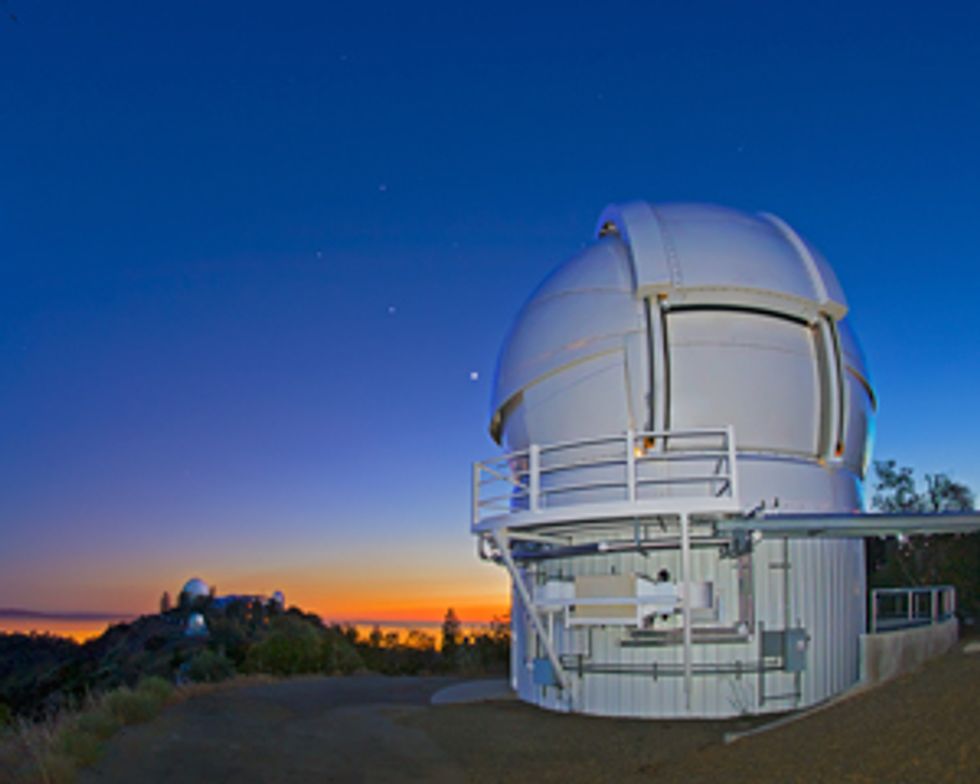$100 Million Breakthrough Listen Initiative Starts Searching for E.T.
The latest search for extraterrestrial intelligence will seek out radio and laser signals from other worlds


The search for extraterrestrial intelligence—SETI—has a checkered history, and even its most ardent proponents accept that positive results are unlikely anytime soon. So it’s no wonder that SETI researchers often struggle to find funding. But earlier this year the Russian billionaire Yuri Milner offered to support SETI efforts over the next 10 years with US $100 million. The first radio observations, through a program called Breakthrough Listen, will be made sometime in the next few months. And one of the early targets may be a star system that has already shown suggestions of possibly being the home of a technologically advanced alien civilization. While the chances for actually picking up signals from an E.T. remain slim, the adventure will surely be fun to watch as it unfolds in 2016.
Matter of Fact
On 15 August 1977, SETI researcher Jerry R. Ehman detected an intriguing signal that appeared to come from somewhere in space. His so-called “Wow!” signal still remains a mystery.
The Breakthrough Listen initiative was announced in July 2015, after Milner had his new SETI-funding program organized under the umbrella of the Breakthrough Prize Foundation, which he had launched in 2013 with additional contributions from Google cofounder Sergey Brin and Facebook cofounder Mark Zuckerberg. There are two components to the initiative: Breakthrough Listen will boost efforts to detect signals from extraterrestrial civilizations, and Breakthrough Message will explore sending signals in the other direction.
“Assume you’re a billionaire and you’re interested in SETI. You could get the SETI Institute or you could get us,” says Andrew Siemion, director of the Berkeley SETI Research Center and one of the leaders of Breakthrough Listen, referring to his group’s counterpart on the other side of San Francisco Bay, the SETI Institute in Mountain View, Calif. “It just so happens that it was us.”
Dan Werthimer, chief scientist of the well-known SETI@home project and another of the leaders of Breakthrough Listen, notes that the fiscal shot in the arm is coming at just the right time. “NASA recently decided that they will no longer fund SETI experiments,” says Werthimer. “So we are very fortunate.” He, Siemion, and their SETI colleagues at Berkeley had been operating on a shoestring. With the Breakthough Listen funding, Siemion says, “the faucet is running—we’re working full steam.”

Some of the money is for observation time, beginning in February, on the Robert C. Byrd Green Bank Telescope in West Virginia. Observations will also take place on “the Dish,” the giant radio telescope at the Parkes Observatory, near Parkes, Australia, starting in October. And some money will go toward “optical SETI,” which is to be carried out using a 2.4-meter-diameter telescope at the University of California’s Lick Observatory, just east of San Jose. The researchers are also building better radio receiving equipment. “There’s a huge amount of money going to the development of instrumentation that we bring to these telescopes,” says Werthimer.
Perhaps most exciting will be Breakthrough Listen’s observations of a star system called KIC 8462852, which came to the attention of researchers this year after amateur planet hunters examining data from the Kepler space telescope noticed that the light from this star varies in a way that is downright bizarre. At times the amount of light diminishes by as much as 22 percent. Yet the dramatic dips in brightness are not periodic, as would be expected were the cause an orbiting exoplanet. “You can come up with [natural] explanations, but they seem contrived,” says Siemion.
One intriguing possibility, much discussed in the media last fall, is that this star is surrounded by artifacts of an alien civilization, perhaps something akin to a “Dyson sphere,” the hypothetical construction an advanced civilization might erect in space to harvest light from its parent star (named after the originator of the concept, physicist Freeman Dyson). Initial efforts by researchers at the SETI Institute using the Allen Telescope Array have, however, failed to turn up any evidence of intelligent life around this star.
Hoping to explore that wild idea, Siemion and his colleagues in early 2015 had submitted various proposals for observation time on the Green Bank telescope. Breakthrough Listen will make further radio observations of this star possible even without any other funding. “One way or another,” says Siemion, “come March, we’ll be observing this star.”
